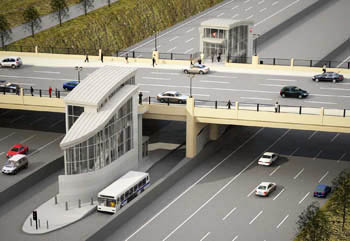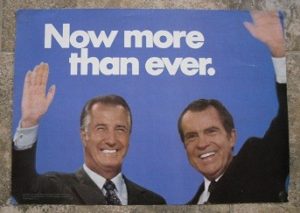So I went to a Project Connect 2.0 presentation on Tuesday night, organized by Friends of Hyde Park. As is my wont, I also asked some pointed questions. You can get the original notes and detailed tweetstorm in yesterday’s post. Today’s is about the general things I noticed. “Javier” is Javier Arguello, “Jackie” is Jackie Nirenberg. So, here we go:
Their top ‘lesson learned’ from 2014 was: “we didn’t have long enough to convince people that the Highland/EastRiverside line was good”.Â

(My paraphrase). I did pointedly and directly ask this question and was unsatisfied with the response. A member of the CAG has confirmed to me in private that they keep asking this question and keep getting this deeply unsatisfying response, so it is clear to me that Capital Metro will admit to no wrongdoing in Project Connect 1.0 despite the vast majority of transit activists eventually agreeing that their process was corrupt and, in the end, publicly opposing their proposal. (I interrupted at one point and reminded them how unprecedented that was – I’m not aware of any other case in the entire country where a major transit proposal was so publically opposed by such a large group of transit activists from that city).
They keep claiming nothing is decided, but it’s clearly decided in some ways.
The framework for discussion has been set in a way that heavily disfavors Guadalupe/Lamar rail. There are three ‘segments’ of travel they put up on the screen; as well as a slide which shows “previous HCT studies”. Guadalupe/Lamar is not in the top slide (most important service), nor is it listed in “previous HCT studies”. It is instead consigned to the second group, called “connector corridors”, implying that Capital Metro has already decided that it cannot be the spine of the transit network. The images they chose to prove that they are ‘mode-neutral’ are, in order, a bad modern streetcar stuck in traffic, a bad BRT system that has proved far less than advertised (Cleveland), and a bad freeway BRT proposal (Minneapolis). I directly asked Javier why they chose these images, and he claimed it was just random chance. Sure it was.
They keep claiming they’re not going to waste a ton of time on more planning, because “the plans are already on the shelves”
yet they are ignoring the 2000 light rail plan, as shown above. In fact, later in the night, Javier tried to claim we didn’t know what people would or wouldn’t support, so I asked him directly “what corridor got the most support in Project Connect 1.0”, and to his credit, he finally answered directly: “Guadalupe/Lamar”.
They really want to triple down on the Red Line.
Javier claimed at one point that reputable people believe they can get 32,000 boardings per day by making more investments in that corridor. Not actual extensions of the line, mind you. He claims that they believe they can get as many riders as a below-average light rail line by simply adding more double-tracked segments and buying more train cars. This is, of course, complete bullshit.
They really want to play up investment in freeway transit.

Javier talked up Mopac express lanes on numerous occasions, which are sort-of OK in my book (many riders of express buses actually pay taxes to Capital Metro, unlike the median Red Line rider). But they’re not actual transformative transit in the land use perspective, for sure. I-35 BRT is a different animal. They envision stations in the freeway corridor – and then, see the next point, they envision circulating passengers off that presumed spine with another bus trip, ignoring the fact that people with actual choices don’t typically take 2-bus rides to work every day.
They have learned that “last-mile problem” is a get out of jail free card for bad transit.
I blame every other transit advocate in Austin for continuing to enable this excuse. As I often say, if your transit provider spends a lot of time talking about their last mile problem, you have a bad transit system. No, not every location can be served without lots of transfers. But when the majority of your passengers on your theoretical ‘spine’ have to transfer, YOU HAVE A BAD SPINE, DAWG. Spines need to go down the middle and get to the good stuff. And especially on the ‘work end’ of the trip (not the ‘home end’): if a large percentage of your riders have to transfer off the spine, you’ve chosen poorly.
As Christof Spieler put it a while back:
For Houston, the strategy meant building a light rail through the city’s primary urban corridor, where lots of people already live and work.
Cities often shy away from that approach because it’s more expensive and disruptive to lay tracks in such populated locations. But the factors that make it difficult to build light rail there were exactly the things that made it the right place to have light rail.
“Often, light rail is driven by people saying, ‘we need light rail somewhere,’ and the political process will tend to put it where it doesn’t upset anyone, where it isn’t in the way of anything,†said Spieler, who is also the head of planning for Houston-based architecture firm Morris. “That is generally not a high ridership corridor. The congested places are the places people are trying to go.â€
And since transit riders are almost always pedestrians on each end of their trip, you can only expect riders to walk to destinations within a quarter mile of a station. That makes it especially important to have stations right in the center of the action, not just near it.
“If you propose transit and no one is against it, it’s a bad project,†Spieler said. “Do you build it where it’s needed, or where it’s easy? That’s the central tension in U.S. cities, and too often they make decisions based on what’s easy.â€
They have also learned that “we have to fix land use” is another get out of jail free card for bad transit.

Unfortunately, by the point they deployed this chestnut, a lot of people had already left, and I had monopolized too much of the Q&A period. I did get in a “hey, you guys remember what happened to the bus service at that VMU on North Loop and Lamar”, but it was too late to force a response. Suffice to say, this gets filed under “THANKS, JULIO!”
Â
They are still treating public input as a charade.
Both Javier and Jackie asked me to keep participating and keep giving input, and Javier expressed frustration at how many times he has heard versions of “you guys lied during Project Connect 1.0, why should we trust you now”. There was also one unsubtle dig during the Q&A period. The most fun part of the night for me was when Javier tried to turn around my “so what did you learn from the 2014 election loss” question at me and asked me why the 2000 rail plan lost. I think people around me saw my eyes turn to saucers and drool start to drip from my mouth at that spicy meatball, which I of course answered with a 60-second version of this old post1.
Oh, and also: I didn’t have the presence of mind to remind them of a pretty important part of the public involvement process that one of their predecessors accomplished…
See also:
- Summary of the meeting via Ricky Hennessy on twitter
- Project Connect 2.0’s main site (not much here yet; we got a lot more than this at the actual meeting).
- Local Mustard on Project Connect 1.0
- And another from Local Mustard
and special thanks to Roger Cauvin who chimed in with a “and by the way it passed in the city limits” exclamation point which I forgot to say ↩


